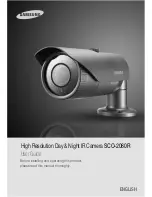
Conventional Fire Detection and Fire Alarm
Control Panel
CLVR02EXT
FIRE PROTECTION MANUFACTURER
Ctra. de Molins de Rei a Rubí, Km. 8,4 - 08191 RUBÍ (Barcelona) ESPAÑA.
Tlf.: +34 935 862 690 - Fax:+34 936 999 261 - [email protected] - www.cofem.com
52
9.1.2.3. Fault test
In order to test that the fault function is working properly, the following operations must be
carried out:
Note: Any connection or movement of the control panel must be carried out with the
panel disconnected, both from the power supply, and from the batteries.
1) Disconnect the wires of the extinguishing relay (R2) at the input of the extinguishing
mechanism to avoid triggering when the output of this switchboard is activated.
Note: VERY IMPORTANT !!!
Given that we are in test mode, activation of the extinguishing output (R2) of the
switchboard must be prevented from triggering the extinguishing mechanism of the
flood room.
2) Check that Common-Normally Open (NO) Fault contacts are electrically open.
3) An open line or crossed line fault occurs in one of the zones, verifying that:
a. The general fault indication led “D”, and fault “Q” of this zone is activated
whenever a maximum time of 10 seconds has passed (see chapter 2.1.1).
Note: The indicator led “Q” activates fixe or flashes according to the open or
crossed line fault respectively.
b. Common-Normally Open (NO) Fault contacts are shorted and the fault relay
indicator led “G” illuminates once the configured delay time is passed.
4) Resetting control panel. All the indicator leds must be disabled with the exception of “B”
power supply (see chapter 2.1.1).
5) Check that Common-Normally Open (NO) Fault contacts are electrically open.
6) Repeat operations 2 to 4 with all active zones.
7) Cause an open line or crossed line fault at the sounder output, verifying that:
a. The general fault indication leds “D” is activated, and sounder relay "F" flashes
whenever a maximum time of 10 seconds has passed (see chapter 2.1.1).
b. Common-Normally Open (NO) Fault contacts are shorted and the fault relay
indicator led “G” illuminates once the configured delay time is passed.
8) Repeat operation 7 with the other sounder output.
9) Reset of control panel. All the indicator leds must be disabled with the exception of “B”
power supply (see chapter 2.1.1).
10) Check that Common-Normally Open (NO) Fault contacts are electrically open.
11) Cause an open line or crossed line fault at the advanced warning extinguishing output
(R1), verifying that:
a. The fault indication led “D” activates, and fault/disable “T" of R1 relay flashes
whenever a maximum time of 10 seconds has passed (see chapter 2.1.1).
b. Common-Normally Open (NO) Fault contacts are shorted and the fault relay
indicator led “G” illuminates once the configured delay time is passed.
12) Resetting control panel. All the indicator leds must be disabled with the exception of “B”
power supply (see chapter 2.1.1).
13) Check that Common-Normally Open (NO) Fault contacts are electrically open.
















































